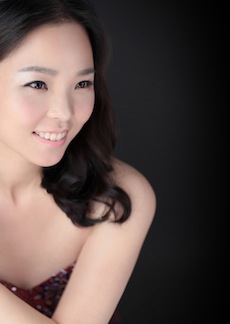Na Young Kim in Review
New York Concert Artists and Associates presents Na Young Kim, piano Merkin Hall, Kaufman Music Center; New York, NY February 21, 2013
Winner of numerous competitions, appearances throughout the world, and the full complement of degrees and diplomas from Seoul National University, New England Conservatory, Cleveland Institute of Music, and The Ohio State University, pianist Na Young Kim gave her New York debut on February 21, 2013 at Merkin Hall.
The first half of the program was all Beethoven, the Andante favori, WoO 57, and the Sonata No. 32 in C minor, Op. 111. The Andante Favori was originally intended as the middle movement of the “Waldstein” Sonata, but Beethoven replaced it with a shorter movement after being criticized for the length of the sonata. As it stands on its own, the decision was well considered and served to improve the dramatic effect of the “Waldstein”. As for the name Andante Favori, Beethoven’s famous pupil Czerny stated, “because of its popularity (for Beethoven played it frequently in society) he gave it the title Andante favori (“favored Andante”). Ms. Kim gave a controlled and confident performance, bringing out the singing tone without allowing its charms to degenerate into something cloying. It was a good start to the evening. The Sonata No. 32 in C minor, Op. 111, Beethoven’s final piano sonata, is a work overflowing with stormy drama and transcendent beauty. With a rich performance history, including many of the legends (e.g. Richter, Kempff, Arrau), its programming begs the question of what a new performer is going to “bring to the table”. Happily, Ms. Kim showed herself to be up to the challenge. The opening movement, Maestoso – Allegro con brio ed appassionato, was rendered by Ms. Kim with driving energy, clarity of lines and balance, and excellent pacing throughout. The second movement, Arietta: Adagio molto, semplice e cantabile, was played with steady restraint. Ms Kim showed herself to be a player who patiently brings out Beethoven’s transcendent writing with understanding of the architectural and dramatic demands of this movement. Her pianissimos were amazingly clear, even capturing a music-box sound near the end of the work. It was an inspired performance of one the greatest works of the piano repertoire.
The second half consisted solely of Rachmaninoff’s popular Sonata No. 2 in B-flat minor, Op. 36. Originally composed in 1913, it was revised by the composer in 1931. It is the version that is most often performed today (in addition to that of Vladimir Horowitz, who with Rachmaninoff’s consent made a hybrid version of the 1913 and 1931 versions in 1940). It is a work requiring power, passion, and tremendous technique, which Rachmaninoff had in abundance. Was Ms. Kim up to the demands? From the ferocious way she attacked the opening bars, it was obvious that she was. Sterling technique throughout, power without pounding, and strong dramatic sense abounded in Ms Kim’s reading, making it all seem so easy, perhaps too much so. It was an “A” performance that could have been “A+” with a touch more fire, but a performance of which Ms Kim can well be proud.
Ms. Kim projects an image of calm inner confidence. Everything seems to have been well thought out, planned carefully, and executed with the utmost precision. Not for a moment did she ever appear to be anything but completely in control, which may have led a visually oriented audience to fail to give her the proper respect for her technical prowess. There is little doubt that Ms. Kim has the technique and the intellect to tackle all challenges, but if I had any suggestion, it would be that she could take a few more risks and savor the adventure of her already excellent playing.
For encores, Ms. Kim played the Chopin’s “Minute” Waltz with sparkle and Robert Schumann’s Träumerei from Kinderszenen with tenderness. It was a gentle end to a memorable concert. Na Young Kim is a musician to watch.

